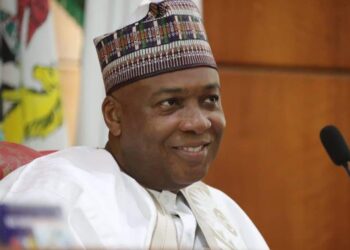Queen Elizabeth II, the longest-serving current head of state, was not originally destined to sit on the throne. Born Elizabeth Alexandra Mary Windsor on April 21, 1926, she was the first child of Prince Albert, Duke of York, and Lady Elizabeth Bowes-Lyon. At the time of her birth, her father was the second son of King George V, which placed Elizabeth relatively low in the line of succession. She was raised as a member of the royal family, but her early childhood bore no indication that she would one day be Queen.
The structure of the British monarchy renders the exact line of succession a complex tapestry, contingent upon birth order, gender, and parliamentary decrees, known as Acts of Settlement. Initially, Elizabeth was third in line, following her uncle, Edward, Prince of Wales, and her father. Because of her uncle’s position as heir apparent and his assumption to become King Edward VIII, it was widely anticipated that his future children would continue the direct succession line.
However, the course of royal history took an unexpected turn. Edward VIII’s abdication in 1936, stemming from his desire to marry Wallis Simpson, an American divorcée, drastically reconfigured the line of succession. Consequently, Elizabeth’s father ascended the throne as King George VI. This monumental shift transformed Elizabeth from an unassuming princess into the presumptive heir. The sudden elevation meant Elizabeth’s early life had to be recalibrated for this new role amid a backdrop of global turmoil and a rapidly changing Britain.
Little could have foreseen such a dramatic alteration of her fate. Amid familial expectations and constitutional stipulations, Elizabeth’s journey to the throne was paved with significant historical milestones, firmly imprinting her narrative as one of extraordinary providence. Consequently, this unexpected turn of events set the stage for Elizabeth II’s enduring legacy.
The Early Life of Elizabeth Alexandra Mary Windsor
Elizabeth Alexandra Mary Windsor, more commonly known as Queen Elizabeth II, was born on April 21, 1926. She was the first child of the Duke and Duchess of York, who later became King George VI and Queen Elizabeth. From her earliest days, she lived a life steeped in tradition and responsibility, a prelude to her future role as the longest-reigning British monarch.
Her upbringing was quintessentially royal yet imbued with the family values installed by her parents. King George VI, ascended the throne in 1936 after the abdication crisis, and Queen Elizabeth provided a stable and nurturing environment amidst a changing world. Elizabeth’s younger sister, Princess Margaret, was born in 1930, and the two siblings shared a close bond throughout their lives. Their unique childhood, structured by royal duties and the weight of the crown, set them apart from typical contemporary experiences.
Elizabeth’s education was facilitated within the confines of the palace, focusing not only on conventional academic subjects but also on constitutional history, law, and languages. Her governess, Marion Crawford, played a pivotal role in her education, instilling in young Elizabeth a keen intellect and an understanding of her future responsibilities. As Elizabeth matured, she received guidance from a number of mentors, including Henry Marten, the Vice-Provost of Eton, who taught her about the intricacies of constitutional monarchy.
These formative years were crucial in shaping Elizabeth’s character and sense of duty. The turbulent political climate of the time served to further reinforce the heroine’s ability to cultivate resilience and a steadfast dedication to her role, qualities that she inherited from her parents. The onset of World War II saw the young princess take on additional roles, including serving in the Auxiliary Territorial Service. This exposure to real-world crises further honed her leadership abilities, preparing her for future challenges.
Elizabeth’s early life, rich in traditions and marked by the emergence of her leadership qualities, set the stage for her unexpected and historical journey to the throne. The influences and experiences of these years indubitably shaped her reign, which would come to symbolize continuity, stability, and service to the nation.
The Abdication Crisis: A Turning Point

In 1936, a monumental event unfolded within the British monarchy that significantly reshaped the line of succession and the future of the throne – the abdication of King Edward VIII. Known as the Abdication Crisis, this episode was catalyzed by Edward VIII’s decision to marry Wallis Simpson, an American divorcée. His determination to marry Simpson, despite widespread opposition, plunged the British crown into turmoil.
King Edward VIII ascended to the throne in January 1936 following the death of his father, King George V. However, his reign was marked by controversy from its inception due to his relationship with Wallis Simpson. Their union was fraught with challenges, primarily because of Simpson’s status as a twice-divorced American, which made the marriage unacceptable to the Church of England and the British establishment. The monarchy was traditionally entwined with the Anglican Church, and Edward’s choice to marry a divorcée was seen as incompatible with his role as the Supreme Governor of the Church.
The situation reached a critical juncture when Edward VIII declared his intention to marry Simpson. Faced with the government’s staunch opposition and aware that his marriage would not receive approval, Edward chose to abdicate the throne on December 11, 1936. In his abdication speech, Edward famously stated that he found it impossible to carry the heavy burden of kingship without the support of the woman he loved. His abdication marked the first voluntary abdication in the history of the British monarchy and led to a dramatic shift in the line of succession.
Following Edward VIII’s abdication, his younger brother, Albert, Duke of York, reluctantly stepped into the role of monarch, taking the regnal name King George VI. This unforeseen ascent of George VI altered the trajectory of the monarchy, subsequently paving the way for his daughter, Princess Elizabeth, to eventually become Queen Elizabeth II. Thus, the Abdication Crisis became a pivotal moment that not only altered the personal lives of the royal family but also steered the British monarchy onto an unexpected course, ultimately leading to the reign of one of its most iconic queens.
George VI: Duty and Leadership
King George VI ascended the British throne in a dramatic turn of events after the abdication of his brother, King Edward VIII, in 1936. Despite being initially viewed as the “spare” rather than the heir, George VI embraced his new role with a profound sense of duty and leadership. He served as a symbol of stability and resiliency for the British people during a time of great upheaval, which included the profound difficulties of World War II.
During World War II, George VI’s leadership was pivotal in boosting national morale. He frequently visited bombed areas, met with citizens and soldiers, and delivered inspiring speeches that galvanized the public to persevere through the adversities of war. His presence and steadfastness provided a reassuring figurehead amid the chaos, demonstrating his unwavering commitment to his country.
Despite his public role, King George VI faced considerable personal struggles, notably his severe speech impediment, which he worked tirelessly to overcome with the help of a speech therapist. Additionally, his health was a constant concern, exacerbated by the pressures of kingship and manifested in chronic lung problems that eventually led to his premature death in 1952. The stress of his reign undoubtedly took a toll on his well-being, yet his dedication to his duties never wavered.
George VI’s unexpected kingship profoundly impacted his daughter, Elizabeth, profoundly shaping her approach to monarchy. Witnessing her father’s resilience and sense of obligation instilled in her a deep understanding of the responsibilities that come with the crown. His exemplary conduct provided a robust foundation upon which she would build her own reign, emphasizing the critical importance of duty, service, and dedication to the nation.
Preparing for The Future: Elizabeth’s Role as Heiress Presumptive
Elizabeth’s life underwent significant changes in both her public duties and her private education as it became increasingly obvious that she would ascend to the throne. The public began to see more of her as she embarked on a journey to meet the growing expectations of her future role. Elizabeth’s calendar quickly filled with various public engagements, allowing her to develop a rapport with the people and an understanding of her duties as the Heiress Presumptive.
Her education was not left solely to formal schooling. Recognizing the unique requirements of her future position, Elizabeth received specialized training in statecraft. She studied constitutional history, law, and foreign languages, essential subjects for a future queen. Trusted advisors and senior members of the royal family supplemented her education, imparting knowledge about the workings of the British government and the Commonwealth.
A milestone in her personal life came with her marriage to Philip Mountbatten in 1947. Philip, a dashing naval officer, provided steadfast support and companionship. Their marriage symbolized stability and continuity, crucial elements for the monarchy. Their union also necessitated adjustments, with Philip renouncing his Greek and Danish royal titles and adopting British nationality to support Elizabeth’s future reign.
Throughout this period, Elizabeth’s increasing dedication to her public role was evident. Her engagement with various causes and organizations reflected her commitment to service. She attended countless events, opened hospitals, and supported charitable endeavours, embodying the spirit of the monarchy. Her poised and composed demeanour began to garner respect and admiration, further solidifying her place in the hearts of the British people.
Through these formative years, Elizabeth was meticulously prepared for the future, showcasing a blend of tradition and adaptability that would come to define her reign. Her experience as Heiress Presumptive not only honed her leadership qualities but also cemented the relationship between the crown and its subjects, setting the stage for her eventual ascension to the throne.
Queen Elizabeth II Coronation: The Dawn of a New Era

On February 6, 1952, the sudden passing of King George VI marked the beginning of a new era in British history. Elizabeth, then just 25 years old, was immediately thrust into the role of monarch. At the time, she was on a tour of Kenya with her husband, Prince Philip. Upon receiving the sombre news, Elizabeth returned to the United Kingdom and assumed her newfound responsibilities with a profound sense of duty and commitment.
The commencement of her reign witnessed the anticipation and preparation for her official coronation. On June 2, 1953, the coronation of Queen Elizabeth II took place at Westminster Abbey in London. The coronation ceremony was orchestrated to perfection, deeply rooted in centuries-old traditions, yet it embraced the evolving modern world. This historic event was broadcast globally, marking the first-ever televised coronation. Millions of viewers worldwide eagerly tuned in to witness the grand ceremony, symbolizing not only the continuity of the British monarchy but also its adaptation to the changing tides of the mid-20th century.
The coronation was a momentous occasion laden with pageantry and symbolism. Elizabeth pledged her oath with sincerity, promising to govern the peoples of Great Britain, her territories, and the Commonwealth with justice and mercy. The ceremony itself was an intricate display of regalia and rituals, including the presentation of the Crown Jewels and the monarch’s regalia, such as the St. Edward’s Crown and the Sovereign’s Orb and Sceptre. Furthermore, the presence of dignitaries and representatives from various nations highlighted the significance of this event on an international scale.
The televised broadcast of the coronation brought the British monarchy into the living rooms of citizens across the globe, fostering a sense of unity and shared heritage. This unprecedented access helped solidify Queen Elizabeth II’s status as a modern monarch, resonating with people of all backgrounds. Her coronation symbolized not just the rise of a new queen, but also the dawn of a new era, bridging tradition with modernity and setting the stage for a reign that would span decades.
Reign and Legacy: A Monarch with Vision
Queen Elizabeth II’s reign, which commenced in 1952, stands as a testament to enduring leadership and profound influence. Her vision for a modernized monarchy has been instrumental in transforming the Royal Family’s place in contemporary society. The Queen’s efforts to humanize and demystify the monarchy have fostered an unprecedented level of public engagement and support.
One of the Queen’s notable achievements was her navigation through the rapidly evolving socio-political landscape of the late 20th and early 21st centuries. Her ability to maintain stability during periods of significant change—from decolonization and the Cold War to the digital revolution—demonstrates her adeptness at governance and diplomacy. Additionally, her role in fostering the Commonwealth of Nations has reinforced global ties, promoting unity and cooperation among the member states.
Her Majesty’s commitment to charitable work is another cornerstone of her legacy. Queen Elizabeth II has been a patron to over 600 charities, thereby addressing wide-ranging issues from medical research to education and sustainable development. This approach not only provided crucial support to various global causes but also positioned the monarchy as a benevolent and philanthropic institution.
Additionally, Queen Elizabeth II’s ability to adapt to changing societal norms has been a defining characteristic of her reign. She embraced modernization while maintaining royal traditions, evident in her decisions to televise royal ceremonies and authorize the use of social media to engage with the public. These moves have helped bridge the gap between the monarchy and the modern world, making the institution more relatable and accessible.
In navigating numerous personal and public challenges with grace and resilience, Queen Elizabeth II has embodied a model of leadership that continues to inspire. Her unwavering dedication to her duties has not only ensured the monarchy’s relevance but has also solidified her legacy as a visionary monarch whose impact will be felt for generations to come.
Queen Elizabeth II: The Enduring Impact of an Unexpected Monarch
Queen Elizabeth II’s ascension to the throne, which was indeed unforeseen, has not only shaped the modern British monarchy but has also left a significant mark on the global stage. It became clear that Elizabeth’s reign would have historical significance when her uncle, King Edward VIII, unexpectedly abdicated and her father, King George VI, passed away suddenly. This series of unexpected events thrust her into the role, yet her dedication and duty turned her reign into one of the most celebrated and stable periods in the history of the British monarchy.
Throughout her time as Queen, Elizabeth II has demonstrated an exemplary blend of tradition and adaptability. Her governance saw the monarchy through several transformative decades, encompassing societal change, technological advancements, and evolving political landscapes. Her presence ensured continuity in times of change and secured the monarchy’s relevance in the modern world. The Queen’s ability to uphold royal traditions while embracing necessary reforms has been pivotal in maintaining the institution’s comprehensive appeal.
On the global stage, Queen Elizabeth II’s influence has transcended mere symbolic representation. Her extensive travels and diplomatic engagements fostered a sense of unity and cooperation across the Commonwealth and beyond. Her profound impact is visible in the sustained goodwill and diplomatic relationships she helped cultivate worldwide. Queen Elizabeth II’s reign has, therefore, not just bolstered the prestige of the British throne but also enhanced its moral and diplomatic stature globally.
In closing, Queen Elizabeth II’s unexpected journey to the throne stands as a remarkable testament to her resilience, adaptability, and unwavering commitment to duty. Her longstanding reign has fortified the British monarchy’s position in the twenty-first century and engraved her legacy as an enduring global icon of stability and grace.












